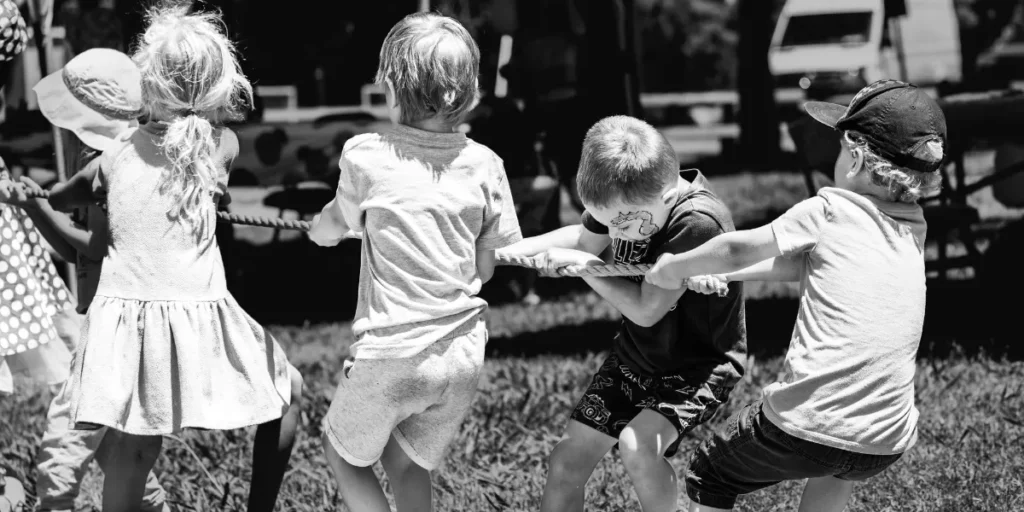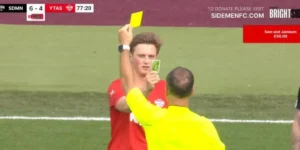The more I observe my five-year-old brother, the more concerned I become. Like many kids his age, he’s increasingly drawn to screens — particularly his phone. While he occasionally astonishes me with his brightness (he recently pointed at a piece of lab equipment and confidently called it a beaker, then declared he was going to “do experiments” with it), I still find myself worrying: what will prolonged screen exposure do to his developing mind?
Because kids need more than screens. They need rough play. They need real-world stimuli. They need to run, climb, fall, scream, and play. They need boredom, because boredom breeds creativity. They need conflict and resolution — the kind you get when you wrestle with a friend over who gets the blue crayon.
Why Rough Play Matters
Psychologist Jordan Peterson often talks about how crucial it is for children to be socialised by the age of four. There’s a study that shows the most aggressive humans, statistically, are two-year-olds. Not all toddlers are aggressive, but those who are tend to be boys.
Why does this matter? Because after age four, the real socialization begins — school, playgrounds, birthday parties, and all that. And when a child’s developmental needs aren’t met? Unsocialised children (the ones who hit, refuse to share, or throw tantrums) are often rejected by other kids.
And once a child is socially rejected, it’s incredibly hard to reverse. The effects of rejection go far beyond friendships: Child can fall behind emotionally, struggle with confidence, and miss key stages in cognitive development.
So by the time they’re four, they’re temperamentally more aggressive — but if they’ve been socialized, they become tolerable little monsters. And that means someone, a parent, peer, or teacher has successfully helped them learn how to interact, and how to manage their aggressive instincts.
One of the key tools in that process? Rough play.
It turns out this kind of physical, unstructured play isn’t just fun, it plays a critical role in emotional and social development –Something researchers have also observed in rats.
Brains Built by Play
This idea comes from Estonian neuroscientist Jaak Panksepp, who coined the term affective neuroscience — the field that studies the neural mechanisms of emotion.
In one study, Panksepp showed that rough-and-tumble play activates ancient emotional circuits in the brain and plays a key role in social and emotional development.
While his work didn’t specifically claim that rough play develops the prefrontal cortex, it laid the groundwork for later interpretations.
Peterson expanded on these findings, suggesting that rough play is essential for developing self-regulation and moral reasoning — functions largely governed by the prefrontal cortex.
In this context, he’s also been critical of the widespread use of Ritalin (methylphenidate), a stimulant medication commonly prescribed for ADHD.
Although Ritalin can help children concentrate and manage impulsive behavior, Panksepp’s early research showed that stimulant drugs suppress play behavior in animals.
So that raises a troubling question: are we medicating away the very behavior that helps build healthy brains?
Let Boys Be Boys
When I was little, we used to go on the trampoline and just have crazy fights — pushing each other, hitting each other. Yes, we almost always got hurt, but it taught us something: boundaries — we learned our pain thresholds. We learned what hurt and what didn’t. We learned to push right up to the edge and feel what was still a game and what was crossing the line.
And according to Peterson, this kind of rough play helps children regulate aggressive impulses and helps the child find a more appropriate embodiment of that aggression.
“We know that the ability to engage in rough-and-tumble play among rats inhibits aggression, impulsive aggression.”
We also know that if rats are deprived of rough-and-tumble play, they show prefrontal cortical developmental deficits and display behaviors similar to ADHD — which you can, interestingly, treat with Ritalin.
Could that be why boys are more often prescribed ADHD meds than girls?
Is School a Modern Prison?
Perhaps boys are getting prescribed more drugs because their natural inclination for active, sometimes chaotic play clashes with the modern expectation that children should sit quietly for hours a day. And when they can’t, they’re seen as disruptive?
Instead of letting them run wild on a field, climb, jump, wrestle, and crash into things until they fall over laughing — we suppress it. We label it. We drug it.
The problem is, these medications don’t just reduce hyperactivity. They dampen the dopamine-based exploratory systems that fuel curiosity and play — the very systems these kids rely on to grow, learn, and adapt.
We’re quieting the very drive that helps them become well-adjusted human beings.
And then we act surprised when they struggle.
“Why in the world would you take six-year-old kids and get them to sit without moving for five hours, unless you want them to grow up fat and stupid?”
That’s Peterson again. Harsh — but not wrong.
Let Kids Be Human
So what happens to most kids? Well, most are socialized by the time they’re four. Through one mechanism or another, they learn to regulate aggression and engage in rough play. They learn to cooperate and compete. They become tolerable, likable, and able to interact with other kids.
But when you don’t socialize them — when they don’t learn these things — their peers reject them. And that’s heartbreaking, because as a parent, you’re meant to make your child.
What we all want is for our children to grow up well-socialized and liked. We want people to like our kids.
So what happens when we don’t let our children socialize? When we let them get stuck in their virtual loops — in their phones?
They grow up slow, socially awkward and underdeveloped. They don’t know how to interact. They become unlikable — not because they’re bad, but because they’ve never had the chance to practice being human with other humans.
So please, teach your kids. Let them play. Let them fall. Let them fight (a little). Let them run wild, push limits, and learn when to stop. Don’t let their childhood be reduced to swiping and scrolling.
Childhood is not YouTube. It’s a muddy backyard. It’s scraped knees, trampoline fights, and learning when enough is enough.
And that’s how you raise a human being.




